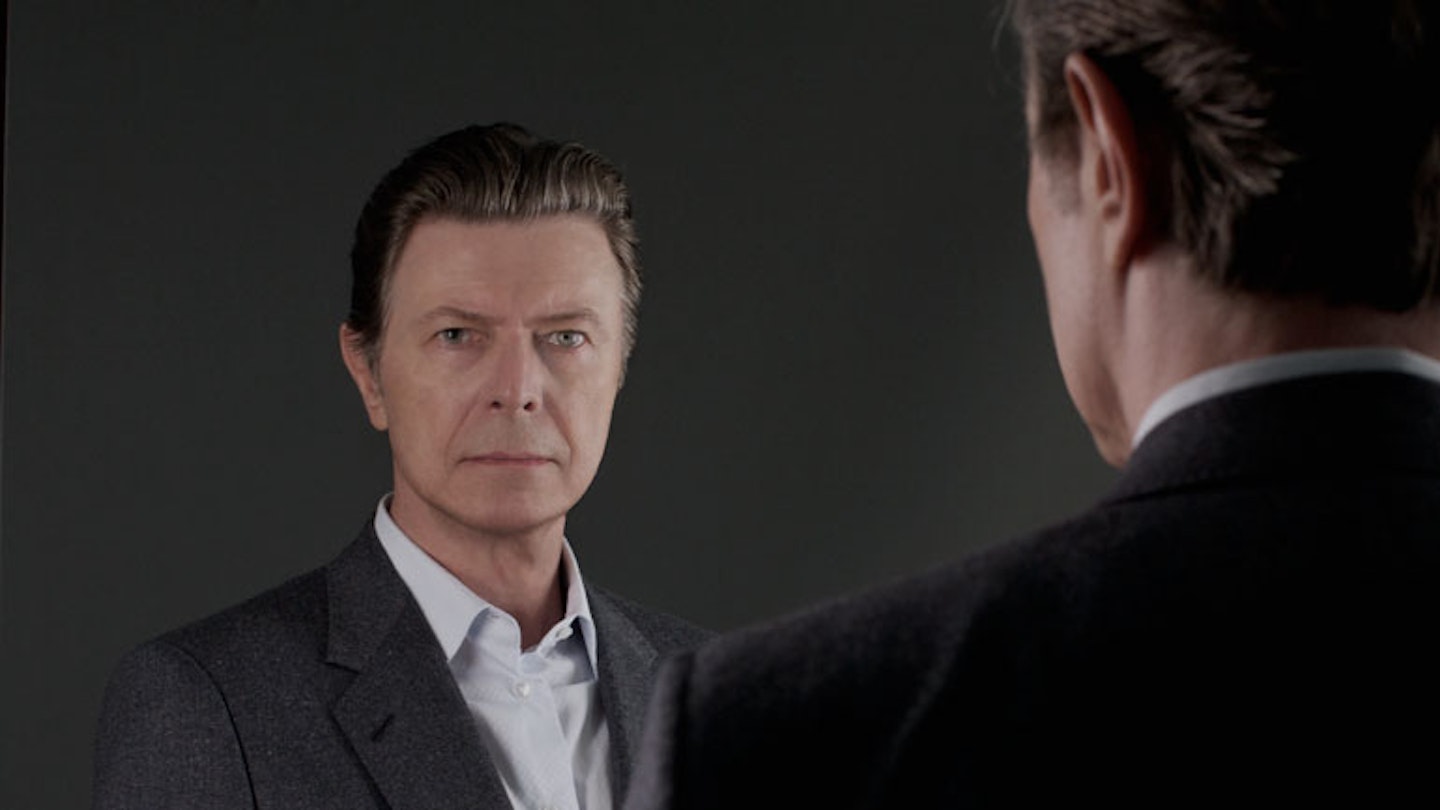David Bowie’s Blackstar arrived two days before its creator’s shock departure. Nine years on from Bowie's passing, his last band speak to MOJO about the background and creation of his final, coded farewell. “In retrospect, it all makes sense,” they tell Martin Aston.
-
READ MORE: David Bowie's 100 Greatest Songs
FOR ALL HIS LIFE-AFFIRMING MOVES, David Bowie had always expressed awareness of mortality. Since the demise of Ziggy Stardust, he’d buried characters, and regularly covered Jacques Brel’s My Death. The Reality album’s title track in 2003 was a marker: “Now my death is more than just a sad song.”
Surgery for a blocked artery in 2004 had pushed the singer into seclusion until a rebirth in 2013 with The Next Day. It was familiar terrain, recorded with his most recent touring band – perhaps too familiar, for what followed was a more characteristic step-change: a July 2014 session with Maria Schneider’s contemporary jazz big band that resulted in the careering audio noir of Sue (Or In A Season Of Crime) and ’Tis A Pity She Was A Whore, released as a single in November. Bowie had embraced jazz before but never this freeform, with vocal and mood reminiscent of his hero, avant-garde stickler Scott Walker.
At the core of the Sue band were Schneider accomplices Donny McCaslin (saxophone), Mark Guiliana (drums) and Ben Monder (guitar) – a seasoned unit who could lock in tight but also take risks. “We reacted,” says McCaslin, “with the courage to have the whole boat shift course on a dime.”
When Bowie and producer Tony Visconti caught a smaller grouping – McCaslin and Guiliana plus Tim Lefebvre (bass) and Jason Lindner (keys) – at the 55 Bar club in Greenwich Village that June, they also clocked that these jazz players knew how to rock out. “When David saw us,” says Lefebvre, “he heard how electric and aggressive we were – more than he anticipated – which really sold us to him.”
By the time the singer and Visconti convened McCaslin, Guiliana, Lefebvre, Lindner and (eventually) Monder for three weeklong sessions between January and March 2015, at New York studio Magic Shop, Bowie was undergoing chemotherapy for liver cancer. The musicians were informed, but he seemed otherwise strong and in good spirits. “This guy was indomitable,” says Lefebvre.
As per Bowie’s usual strategy, he wanted to see what his musicians could contribute, then react to it. “He said, ‘I want you guys to go with whatever you’re hearing; don’t be inhibited,’” McCaslin recalls. Bowie would also sing to the band’s live takes, “in the collaborative spirit of the moment,” says Guiliana. “Given his energy and reactive vocal gestures, I assume what you hear on ’Tis A Pity… is his scratch vocal.”
Both sides of the 2014 single were stripped down and re-recorded for Blackstar. In the meantime, Bowie and Visconti had fallen for Kendrick Lamar’s To Pimp A Butterfly. “It had jazz guys on it,” says Lefebvre, “with different perspectives on how to play a song.”
BOWIE’S CHEMOTHERAPY WAS ONGOING AS recording continued. Not that band members had an inkling of what Lefebvre calls the “tinges of imminent death” in the lyrics (notably “Look up here, I’m in heaven” in Lazarus). Guiliana remembers “mumbles and wordless melodies” on the demos Bowie presented before each session. “I’m not a lyric person anyway, I react to feelings,” says McCaslin. “As we recorded Lazarus and David was singing on the other side of the clear glass from me, I closed my eyes and tried to imagine the sax being a pillow around him.”
Once again, Bowie had unearthed musicians to best express his vision, in music that could mirror anger and joy, despair and tenderness. Meanwhile, under a new kind of pressure, he’d found imaginative and profound melodies and words rife with clues and confessions. The variety of rhythmic approaches – the driving grooves of Sue and ’Tis A Pity; Girl Loves Me’s staccato beats – masked the fact that the album is largely a succession of ballads, aching and searching, that conclude with elegiac Dollar Days and wistful I Can’t Give Everything Away, a message to his audience as pointed as Ziggy Stardust’s Rock’n’Roll Suicide. Its harmonica recalls Low’s A New Career In A New Town, whilst Monder’s guitar solo echoes Mick Ronson and Robert Fripp. “There are a lot of allusions to his past on Blackstar,” says Monder, “but presented in a fresh context.”
"Would there even be a record?"
However, the fate of the tracks was still not clear to Bowie’s band. “Would there even be a record?” wondered McCaslin.
Bowie and Visconti hunkered down to complete, and finesse, Blackstar, giving it both steeliness and warmth. Around November, a couple of the players were summoned to hear the record. “David was supposed to be there,” says Lefebvre, but he failed to show. Having been in remission during the summer, Bowie had recently been told that his condition was terminal.
Upon its release on January 8, 2016, the world only had two days to digest Blackstar before news of Bowie’s death. “It still crushes me,” says Lefebvre, speaking on behalf of all Bowie fans. Guiliana agrees, “but it makes me happy as well as sad, and feeling overwhelming gratitude that Blackstar exists.”
“In retrospect, it all makes sense, even without being aware of the lyrics,” says Monder. “There is this amazing balance between darkness and hope. It’s simultaneously a celebration of life, and a farewell.”
Although it’s hard to view Blackstar except through the filter of Bowie’s death, in truth a work so rich, dynamic and expressive also lives outside of its context.
“It’s a piece of high art where different elements combined in a seamless way,” says McCaslin. “It’s such a deep record, which speaks to the core of humanity.”
